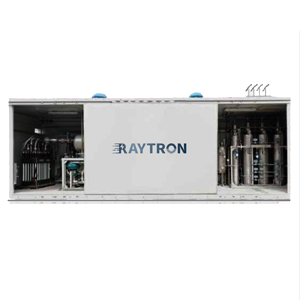Introduction
Proton Exchange Membrane (PEM) water electrolysis has emerged as a promising technology for sustainable hydrogen production, offering several advantages over conventional alkaline electrolysis. As the world transitions toward renewable energy systems, PEM electrolysis provides an efficient means to convert intermittent renewable electricity into storable hydrogen fuel. This article explores the fundamental principles, components, recent advancements, and challenges in PEM electrolysis technology.
Principles of PEM Electrolysis
PEM electrolysis operates on the principle of electrochemical water splitting, where water molecules are dissociated into hydrogen and oxygen gases using an electrical current. The process occurs in an electrolyzer cell consisting of two electrodes (anode and cathode) separated by a solid polymer electrolyte membrane.
The key reactions are:
- Anode (oxygen evolution reaction, OER): 2H₂O → O₂ + 4H⁺ + 4e⁻
- Cathode (hydrogen evolution reaction, HER): 4H⁺ + 4e⁻ → 2H₂
Unlike alkaline electrolyzers that use liquid electrolytes, PEM systems employ a solid polymer membrane (typically Nafion) that serves as both the electrolyte and the gas separator. This design offers several advantages including higher current densities, compact system design, and rapid response to variable power inputs.
Key Components of PEM Electrolyzers
1. Membrane Electrode Assembly (MEA)
The heart of a PEM electrolyzer is the MEA, which consists of:
- Proton exchange membrane
- Catalyst layers (anode and cathode)
- Gas diffusion layers (GDLs)
The membrane must exhibit high proton conductivity, excellent chemical stability, and low gas permeability. Perfluorosulfonic acid (PFSA) membranes like Nafion remain the standard, though newer hydrocarbon membranes are being developed to reduce cost.
2. Catalysts
The OER at the anode requires precious metal catalysts due to the harsh oxidative environment:
- Iridium oxide (IrO₂) and ruthenium oxide (RuO₂) are most common
- Platinum (Pt) is typically used at the cathode for HER
Research focuses on developing non-precious or reduced precious metal catalysts to lower costs while maintaining performance and durability.
3. Bipolar Plates
These separate individual cells in a stack and provide:
- Electrical connection between cells
- Flow fields for water and gas distribution
- Structural support
Titanium is commonly used due to its corrosion resistance, though coated stainless steels are being explored as lower-cost alternatives.
4. Porous Transport Layers (PTLs)
Also called gas diffusion layers, PTLs:
- Facilitate water transport to the catalyst layer
- Provide pathways for gas removal
- Conduct electrons between catalyst and bipolar plates
Titanium sintered powders or felts are standard for the anode, while carbon-based materials can be used at the cathode.
Recent Technological Advancements
1. High-Efficiency Systems
Modern PEM electrolyzers can achieve:
- Cell voltages of 1.8-2.2 V at 1-2 A/cm²
- System efficiencies of 65-80% (HHV)
- Operating pressures up to 70 bar
2. Advanced Membranes
Development focuses on:
- High-temperature membranes (120-200°C)
- Thin membranes for reduced resistance
- Reinforced membranes for mechanical stability
- Alternative chemistries to PFSA
3. Catalyst Innovations
Recent progress includes:
- Mixed metal oxide catalysts (e.g., Ir-Sn oxide)
- Core-shell structures with reduced precious metal content
- Non-precious metal catalysts (e.g., transition metal phosphides)
4. System Integration
Advancements in:
- Dynamic operation capabilities
- Hybrid systems coupling with renewables
- Thermal integration with other processes
Challenges and Future Directions
Despite significant progress, several challenges remain:
- Cost Reduction: Precious metal catalysts and titanium components contribute to high capital costs.
- Durability: Membrane degradation and catalyst dissolution limit operational lifetimes.
- Scalability: Manufacturing large-area MEAs and stacks presents engineering challenges.
- Performance: Further improvements in efficiency and current density are needed.
Future research directions include:
- Development of anion exchange membranes (AEM) for alkaline PEM systems
- Advanced manufacturing techniques for mass production
- Integration with renewable energy systems
- Hybrid systems combining advantages of PEM and alkaline technologies
Conclusion
PEM electrolysis represents a critical technology for the emerging hydrogen economy. While challenges remain, ongoing research and development continue to improve the performance, durability, and cost-effectiveness of these systems. As renewable energy penetration increases, PEM electrolyzers will play an increasingly important role in energy storage and decarbonization efforts across multiple sectors.

